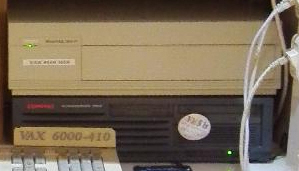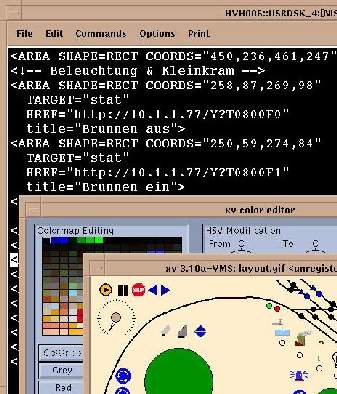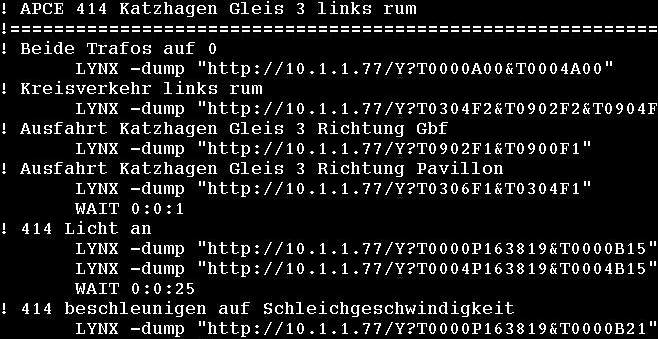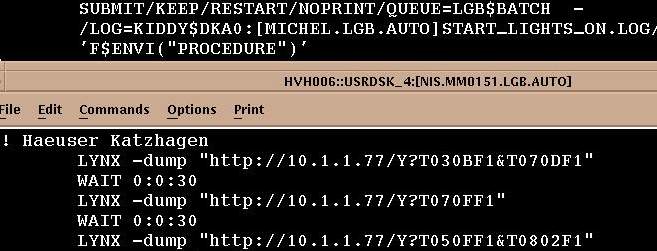LGB - a control - Further computers
"Classic Control Edition"
probably were the designation IT sales scientists would chose for the railroad's control using an ordinary, stationary computer.One of this system's greatest advantages is its independence of operating systems and hardware. PCs running Windows or Linux can be used as well as SUN machines running Solaris or the known hardware platforms for the OpenVMS operating system. Which may remind you of Shakespeare:

Incorporated into operations:
Compaq's Alpha Server DS10 and Digital's MicroVax 3100/85
"What You Will"
A conventional computer or display work station (the latter is especially mentioned for X11-users f.i. under UNIX and VMS) can be used in the same way like a handheld to control the railroad. The same files which are used on the handheld need to be resident on a stationary box which also needs a webbrowser installed - that's all.A "calculating servant" located beneath the desk or in a 19"-rack and its monitor are quite inconvenient to carry around in the garden, though. At a first glance this might lead to the assumption that such gear is more likely to serve as a control for an indoor layout (where the monitor perhaps is located right beside the "main station").
Nevertheless both the usage of a stationary workplace and a handheld makes sense because establishing the control files using a handheld is hardly feasable. Creating the GIF- and HTML-files for the user-interface with the help of "fully grown" software is much easier on a big screen, than using some "helpware" on the mice-cinema-like handheld.

Editing GIF- and HTML-files at the computer
The same is valid in case changes become necessary due to extensions or conversions of the layout and these files need to be edited for an adaption. In addition the tests required in such a case (before putting the handheld into operations again outside) can be accomplished in a much more convenient manner than with the handheld's mini screen.
The WLAN can be used to transmit the control files created on the computer to the handheld. Windows incorporates "shares" for this operation while applications like PCnetlink or Samba will be used on UNIX systems. OpenVMS offers Pathworks or AdvancedServer for this.
Automating the railroad's operations
becomes possible most simple using a text based webbrowser like f.i. Lynx (http://lynx.browser.org). HTML-commands controlling the railway are given at the command prompt. A large number of such commands can be stored in a file which then can be executed by the computer as a script or batch. This way a schedule can be set up which keeps the trains running all the day - and one can watch them running without lifting a finger.

Extract from an automated procedure
Functions like switching on the illuminations in the evening or ringing the church's bells at the correct time are easy to automate in batch mode this way. Also very effective are randomly triggered functions like the saw mill's drive or the fire department's siren. As soon both the computer and the railroad are up and running, the layout will come to life automagically.

Automated control of illuminations
Further use for the computer
is found with programming the switch and track modules, which can be configured using a webbrowser. A special programming device is - like often seen with other systems - not necessary. Unless one does not want to set up a special HTML page for this purpose, the programming is done using a text-based browser. The commands used for programming the modules are very similar to the examples shown above.Dimming illuminations, modifying an EPL-drive's switching characteristics or changing a module's address - everything is possible. In running operations. Configuration parameters can be set temporary (until the next reset takes effect) or permanently.

